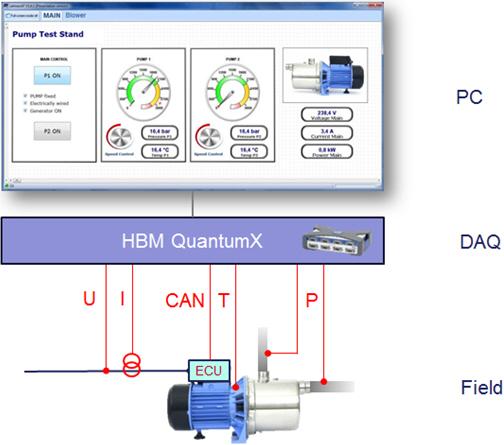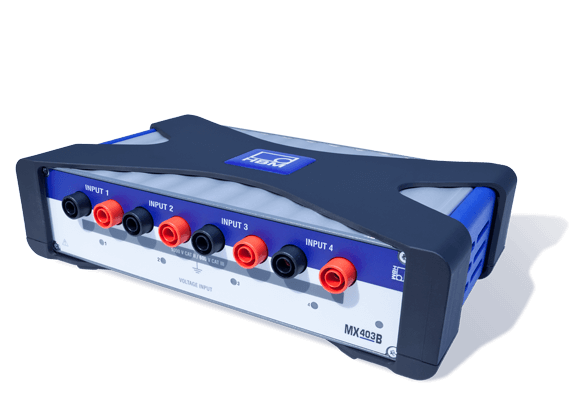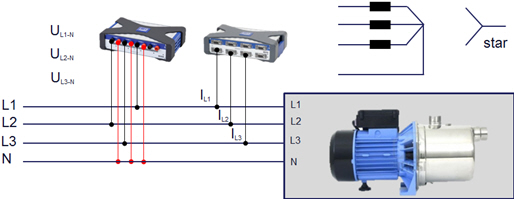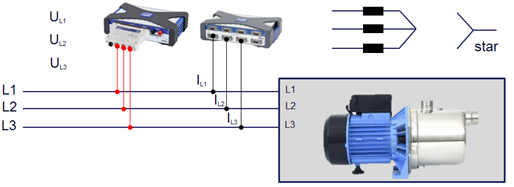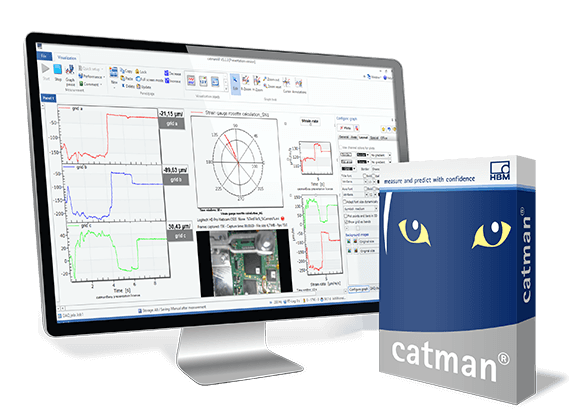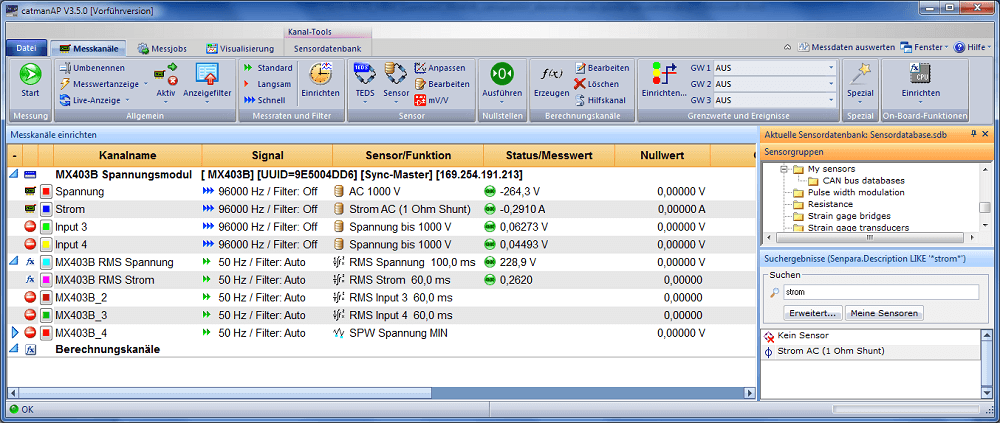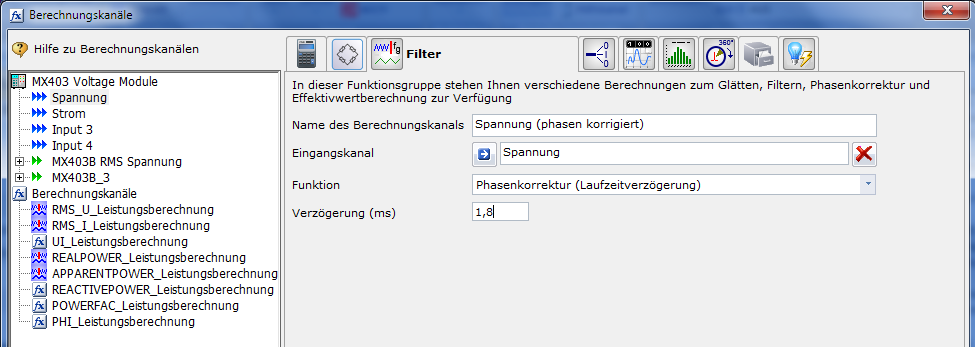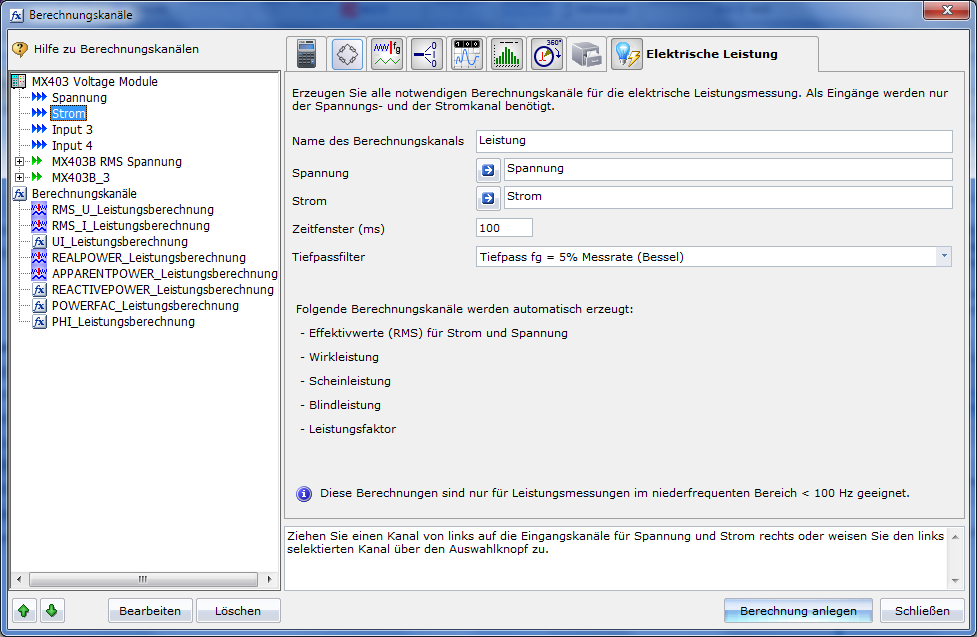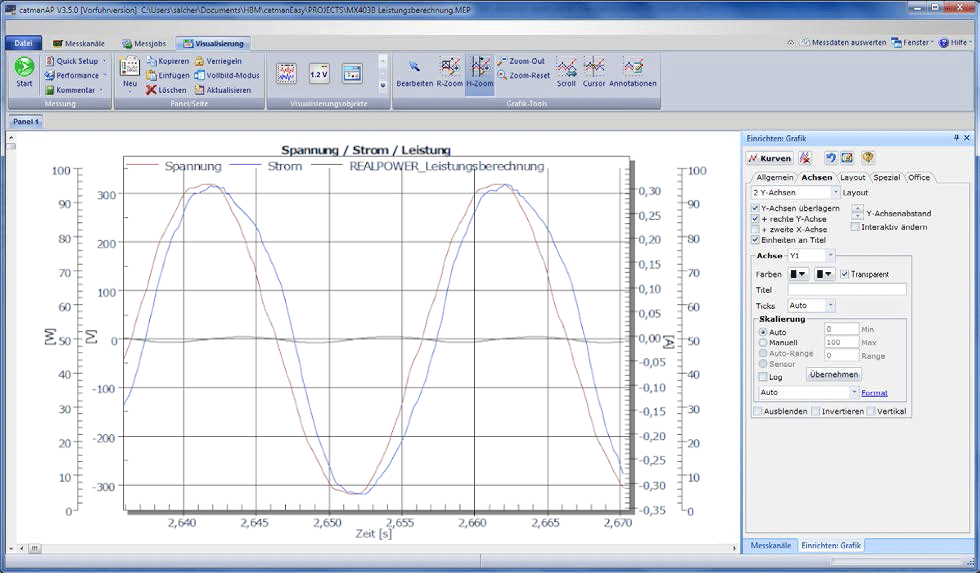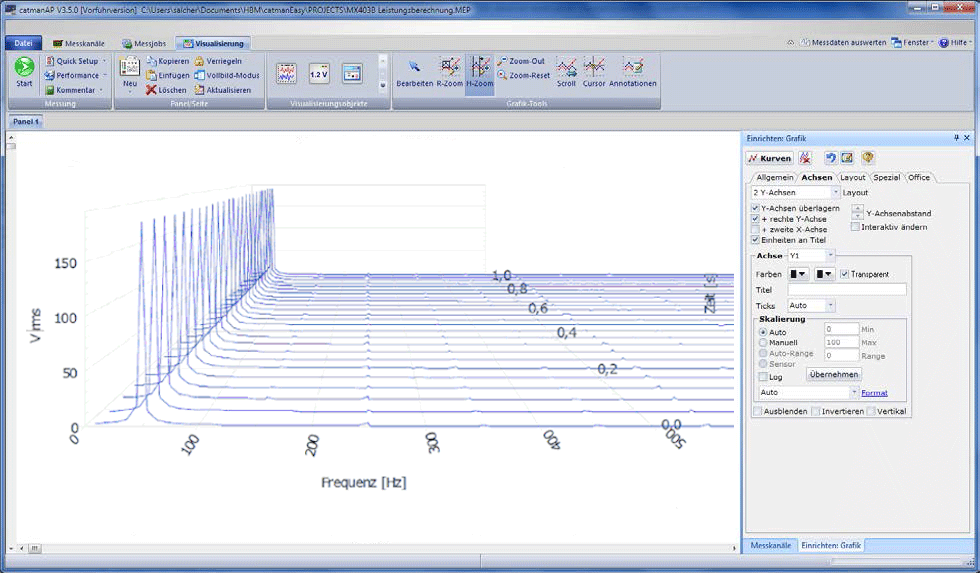Acquiring Current with QuantumX MX403B
Electric current can be measured based on different principles. While a zero flux converter, shunt or Hall sensor converter allow for precise, phase-synchronous measurements of small currents, current probes are particularly suitable for quick current measurements in 1-phase and 3-phase operation. Current clamps enable a wide range of electrically isolated measurements of alternating currents (often also direct currents) without the current carrying line having to be opened. Furthermore, current clamps are inexpensive and allow for power analysis in applications with less stringent accuracy requirements. Different designs of current probes are available for different purposes (inductive, Hall effect).
The inductive measurement principle results in aphase delay in thecurrent transformer (skewing)between the current clamp's real current and its output voltage, which needs to be compensated for prior to calculating the power. This involves correspondingly delaying the measured voltage. With some current clamps, the phase angle error varies according to the frequency and over the measuring range, which, of course, impacts on the power calculation! Depending on the measuring range, 3 to 10° can occur at reference conditions. Please note: a perfect sinusoidal voltage, 45…60 Hz, 23° C ambient temperature and 50% relative humidity are used as reference in most cases. Every deviation from this reference can and will impact on the accuracy of the current measurement and thus of the power calculation. Therefore, selecting the right current clamp is of paramount importance. For this reason, HBM directly offers current clamps.
The phase shift needs to be compensated for to enable the power calculation to be performed correctly. The easiest way to compensate for the phase shift and thus determine power is to delay the measured voltage correspondingly. This process is described in more detail below. Now that both electrical quantities have been discussed, we can consider the software required for calculating electrical power.
